Introduction:
Overall, the disease situation in Europe is very similar although there are some countries that have a problem with certain diseases that others do not have.
For example, in the UK we have only just officially recorded (Dec 2007) the presence of the fungus Pneumocystis carinii in finishing pigs (Fig. 1) whereas it has been widely recorded in other countries such as Denmark for a number of years.
Similarly, the UK has antibodies to EMCV virus in its pigs (20% some years ago) but has never recorded either pathological or clinical disease associated with this virus.
Viruses:
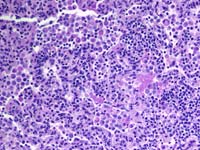 Figure 1: Pneumocystis carinii pneumonia |
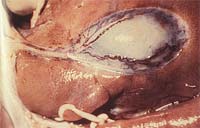 Figure 2: Gall bladder in an ASF case |
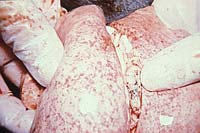 Figure 3: Lungs from a CSF case |
 Figure 4: Severe rhinitis in an Aujeszky’s case |
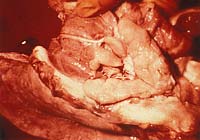 Figure 5: Enlarged trachebronchial lymph nodes in PCV2 case |
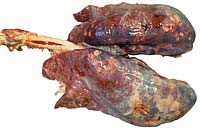 Figure 6: Lungs from a case of Swine influenza |
Secondly, the viral diseases disturb the balance but there are only basically only three that we have to worry about. These are PRRS, PCV2 (Fig. 5) and Swine influenza (Fig 6).
Other viruses found across Europe eg PCMV (the old Inclusion Body Rhinitis Virus) and PRCV may have strains that vary in virulence across Europe but essentially the virus is similar.
All across Europe practitioners and veterinary scientists may be waiting to see if the vaccination drives for PCV2 show that all disease is associated with this agent after all?, whether it was PRRS all the time? or that the original bacterial causes were masked by our concentration on Wasting (PMWS) and PCV2.
PCV2 and PRRS destroy or damage the immune response to other agents so are always a destabilising influence within the pig herd. There are of course variations in the PCV2 virus and in the end there may be differences of which we are not yet aware as molecular techniques improve with time. These may eventually be able to explain differences in transmission rates, infection rates, pathogenesis, virulence and therefore clinical signs, pathology and course of disease.
Swine influenza may be less important due to global warming (survives less well in warm winters) or it may be that the population has adjusted to H1N1 poultry strains or the H1N2 recombinant. It may be that we are all so obsessed by PCV2 that we have forgotten the importance of Swine influenza. Across Europe, the relative importance of classical H1N1, H3N2 and H1N2 viruses and poultry H1N1 viruses varies from country to country. In the UK the poultry virus H1N1 195852 is the most common but in other European countries it may be the H1N2 viruses.
Many of the older virus diseases return when you least expect them. For example we have had cases of TGE on farms not where the TGE virus has changed but the PRCV that normally vaccinates the animals against TGE has mutated. In these cases we have found that the original farms affected in the 1960’s still have the TGE viruses but the piglets are still protected by PRCV. Porcine Epidemic Diarrhoea virus will similarly cause disease sporadically when strains change.




